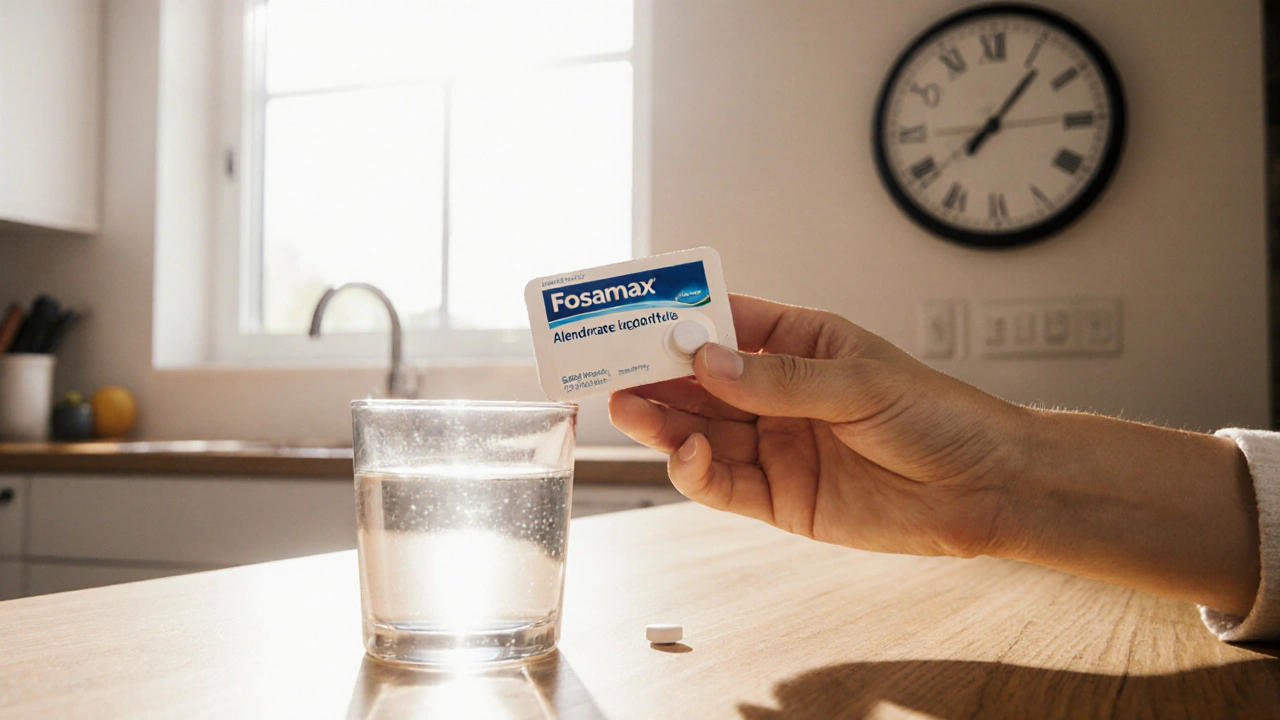A thorough side‑by‑side comparison of Fosamax (alendronate) with other osteoporosis drugs, covering efficacy, dosing, side‑effects, cost and how to choose the best option.
Alendronate: Uses, Benefits, and FAQs
When working with Alendronate, a prescription bisphosphonate that slows bone loss by inhibiting osteoclast activity. Also known as Fosamax, it’s a cornerstone for preventing fractures in people with weakened bones.
One of the biggest reasons patients turn to Osteoporosis, a condition where bone density drops and fracture risk climbs. It often shows up after menopause or in older adults, but it can affect anyone with a family history or long‑term steroid use. Alendronate directly tackles the disease by reducing the rate at which bone is broken down, letting the body rebuild stronger tissue.
The drug belongs to a larger family called Bisphosphonates, medications that bind to bone surfaces and interfere with the enzymes osteoclasts need to resorb bone. Other members include risedronate and ibandronate, but Alendronate remains the most widely prescribed because of its solid safety record and convenient weekly or monthly dosing.
While Alendronate does most of the heavy lifting, optimal bone health usually needs a supporting cast. Calcium supplements, the primary mineral for bone formation, help ensure the body has enough raw material to lay down new matrix are often recommended alongside vitamin D, which boosts calcium absorption. Skipping these co‑factors can blunt the drug’s effectiveness and leave patients vulnerable to the very fractures they’re trying to avoid.
Practical Tips for Getting the Most Out of Alendronate
Taking Alendronate correctly matters more than the dose itself. The tablet must be swallowed with a full glass of plain water on an empty stomach, and you should stay upright for at least 30 minutes. This routine prevents esophageal irritation—a common complaint that can be avoided with simple timing. If you miss a dose, wait until the next scheduled day instead of doubling up, because higher peaks don’t improve outcomes but can increase side‑effects.
Side‑effects often start mild and fade as your body adjusts. You might notice stomach upset, occasional muscle aches, or a rare flu‑like reaction. Persistent jaw pain or exposed bone lesions signal a serious condition called osteonecrosis of the jaw; if that happens, contact a dentist familiar with bisphosphonate patients right away. Regular dental check‑ups and good oral hygiene lower that risk substantially.
Monitoring bone density with a DEXA scan every 1‑2 years gives a clear picture of how well Alendronate is working. Improvements in the T‑score usually appear after a year, confirming that the medication is doing its job. If the scan shows little change, your doctor may consider a drug holiday or switching to another therapy.
All of these points—proper administration, supportive nutrients, side‑effect vigilance, and periodic bone‑density testing—form a coherent strategy that maximizes the benefit of Alendronate. Below you’ll find a curated list of articles that dig deeper into each of these areas, from detailed dosing guides to the latest research on bisphosphonate safety. Dive in to get the practical insights you need to manage bone health with confidence.

